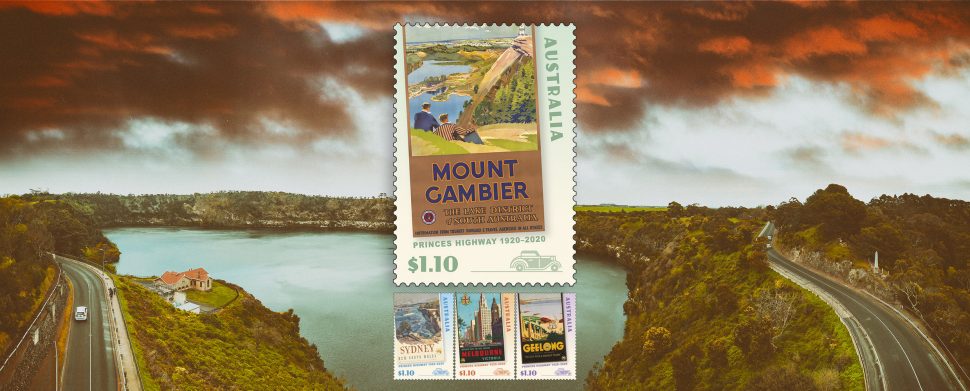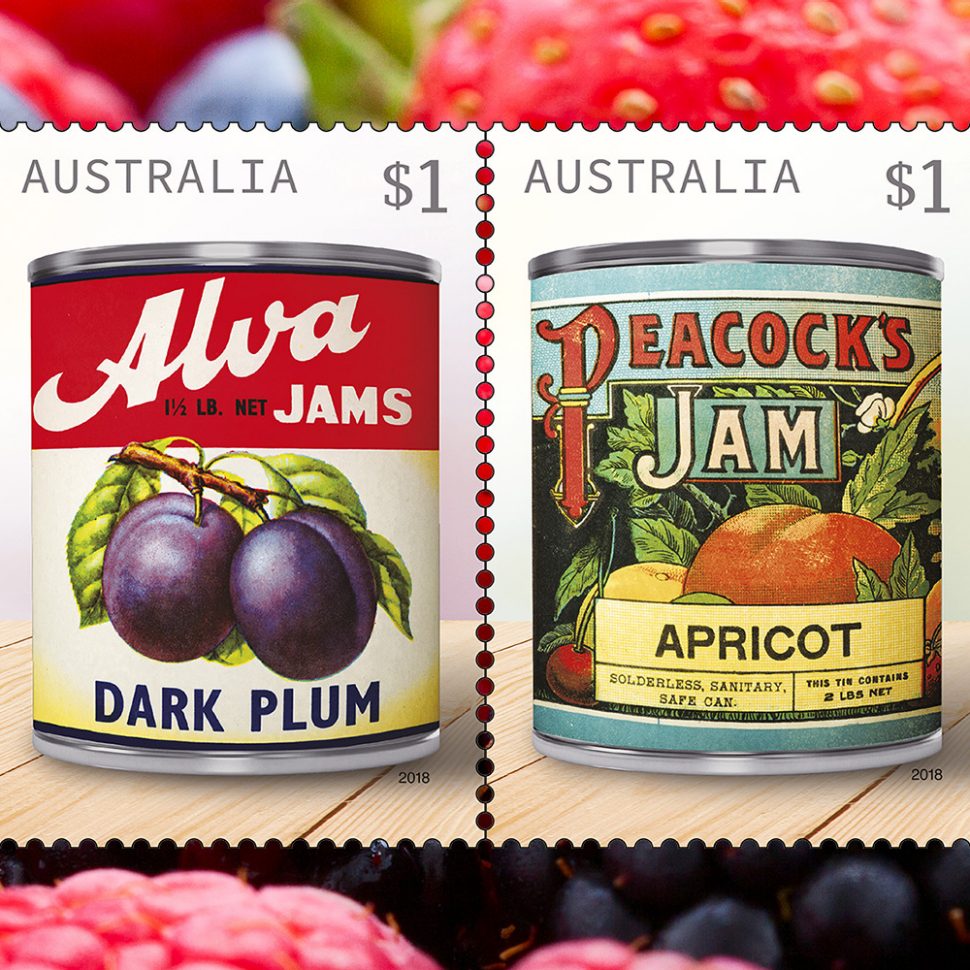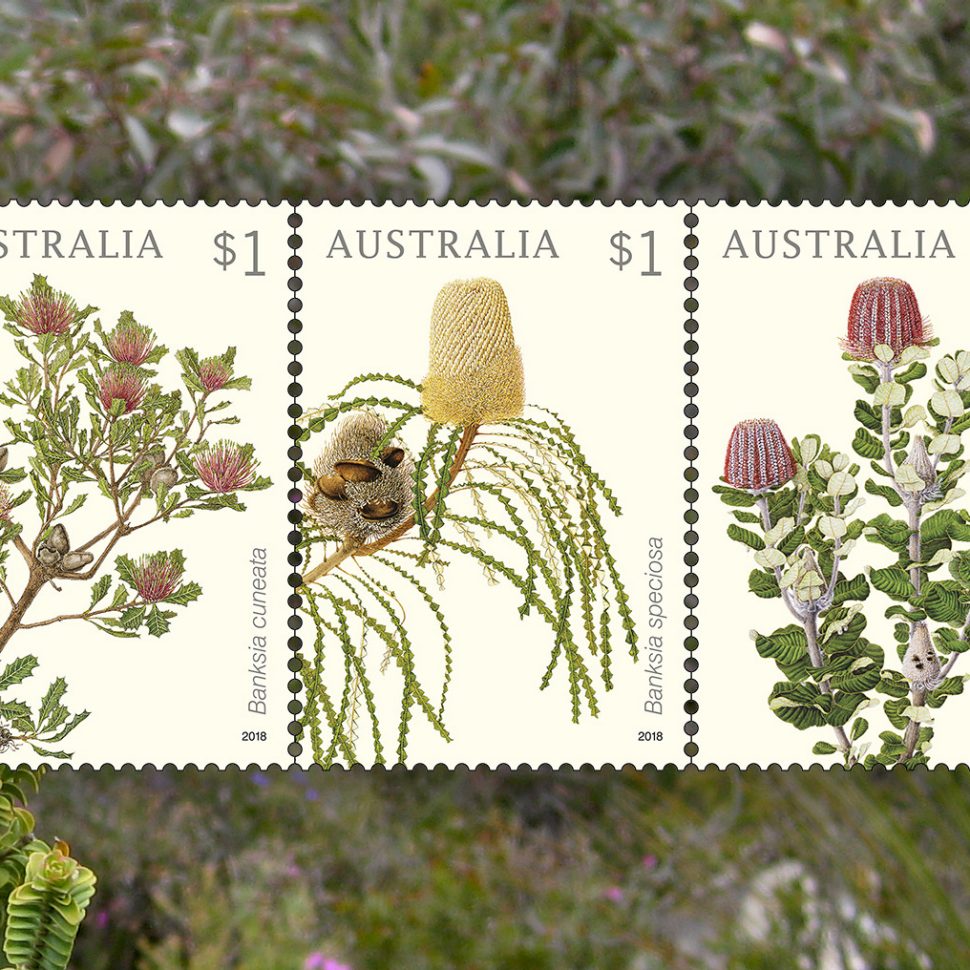In the early 20th century, driving on the scenic, coastal route between Melbourne and Sydney was a popular pastime – meandering through the Gippsland lakes and the Sapphire Coast (including the pretty towns of Eden and Merimbula), seeing the beaches of Jervis Bay and Ulladulla, and the rainforests near Kiama, and admiring Gold Rush and Victorian buildings along the way.
On 20 August 2020, Australia Post is releasing a stamp issue commemorating the centenary of the Princes Highway, which traverses most of this coastal drive. The Princes Highway was officially opened in 1920 as a major arterial road between Sydney and Melbourne via the New South Wales South Coast and Gippsland, in Victoria. Established from existing roads, it was named in honour of Edward, then Prince of Wales, who had recently conducted a royal tour of Australia. In 1922, approval was given to extend the Princes Highway to Adelaide via Geelong, Warrnambool, Portland, Robe and Mount Gambier. It was later extended to Port Augusta.
The stamp designs in this issue feature vintage travel posters that celebrate some of the cities and towns along the length of the highway. Such posters were part of the Golden Age of poster design in Australia, which largely occurred during the 1930s, a time of rapid modernisation in Australia.
The Victorian Railways and the Australian National Travel Association, as well as local tourist boards, commissioned a variety of posters to promote tourism and outdoor recreation, to the domestic and international market, filled with optimistic slogans and idyllic landscapes, some in a painterly style, others quite graphic and bold. Qantas Airways also produced posters that promoted air travel as a convenient and luxurious alternative to sea travel and promoted Australia as a sun-filled travel destination for overseas visitors.
The outbreak of World War II eventually led to a slow in demand for travel posters. Colour photography and screen-printing gradually overtook illustrative work, postwar, but the Golden Age of poster design continues to influence graphic artists and allows us to appreciate our popular tourist destinations through a nostalgic lens.
John C Goodchild, Mount Gambier, the Lake District of South Australia, c. 1930
John Charles Goodchild (1898—1980) arrived with his family in South Australia in 1913, from London. After serving as a member of the Australian Medical Corps (9th Field Ambulance) during World War I, Goodchild attended the South Australian School of Arts and Crafts and produced Adelaide in Pen and Ink Drawings (1920). He studied at the Central School of Arts and Crafts, London, in 1921, before returning to Adelaide and becoming a commercial artist. He taught etching at the School of Arts and Crafts and exhibited his work in Adelaide and Sydney. As well as his etchings and drawings, Goodchild produced landscapes, street scenes and architectural views in watercolour, with works purchased by major Australian galleries as well as the Library of Congress, Washington, and the British Museum, London. In 1945, Goodchild was commissioned as an official war artist by the Australian War Memorial, Canberra.
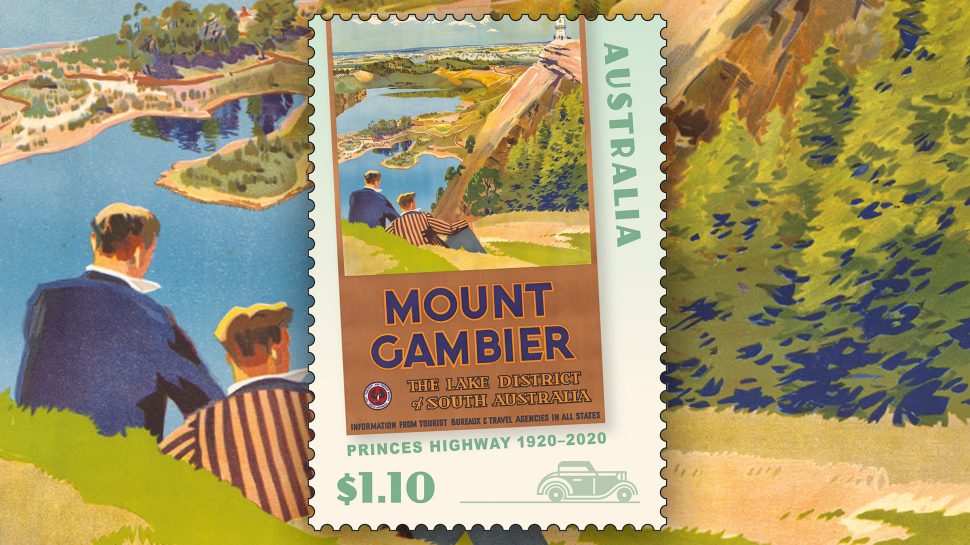
James Northfield, Geelong, the city with a holiday charm, c. 1930
Isaac James Northfield (1887–1973) was born near Inverleigh, Victoria. Following school, Northfield studied at Gordon Technical College. He joined a local lithographic firm before moving to Melbourne to continue his apprenticeship. Northfield set up his own studio in Flinders Street, Melbourne, specialising in hand lithographic work. With a growing reputation, he was commissioned by the Victorian Railways and the Australian National Travel Association to design travel posters, becoming one of the most celebrated travel posters designs of the early 20th century and continuing his commercial art career into the late 1940s, including for government and overseas clients. His works are held by major institutions, such as the National Gallery of Australia and State Library of Victoria.
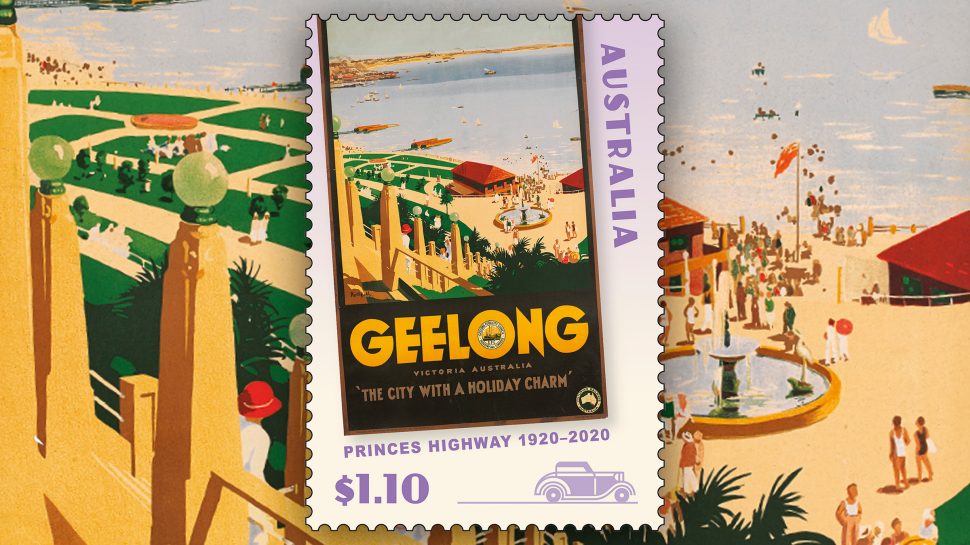
Percy Trompf, Melbourne, Victoria, seventh city of the empire, c. 1940
Like Northfield, commercial artist Percy Trompf (1902–1964) grew up in country Victoria. Also, like Northfield, Trompf is renowned for his early 20th century travel posters. After studying at Ballarat Technical Art School, Trompf made his start designing chocolate and confectionary wrappings, before opening his own studio in Little Collins Street, Melbourne, where he specialised in advertising posters. The bright and colourful travel posters he produced for Australian National Travel Association and the Victorian Government Railways during the 1930s and 40s attracted much attention in Australia and overseas and led to several awards for Trompf.
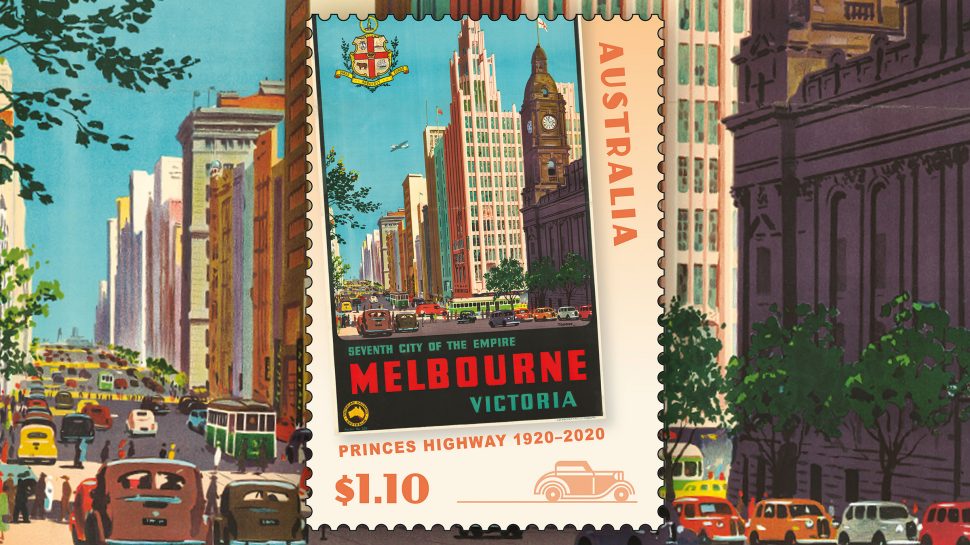
Richard Ashton, Sydney, New South Wales, c. 1940
Born in Melbourne in 1913, before moving to Sydney in 1914, artist Richard Ashton worked as a landscape and seascape artist, including as an official war artist during World War II. After the war he was art and publicity officer of the New South Wales Department of Tourism and Immigration for more than two decades (the same organisation that commissioned the poster featured on the stamp), before taking over the directorship of the Julian Ashton Art School in 1960, which had been established by his late grandfather. His work is held in the collections of the Art Gallery of New South Wales and the National Gallery, Canberra.

The Princes Highway: 1920–2020 stamp issue is available online from 20 August 2020, at participating Post Offices and via mail order on 1800 331 794, while stocks last.
This content was produced at the time of the stamp issue release date and will not be updated.
